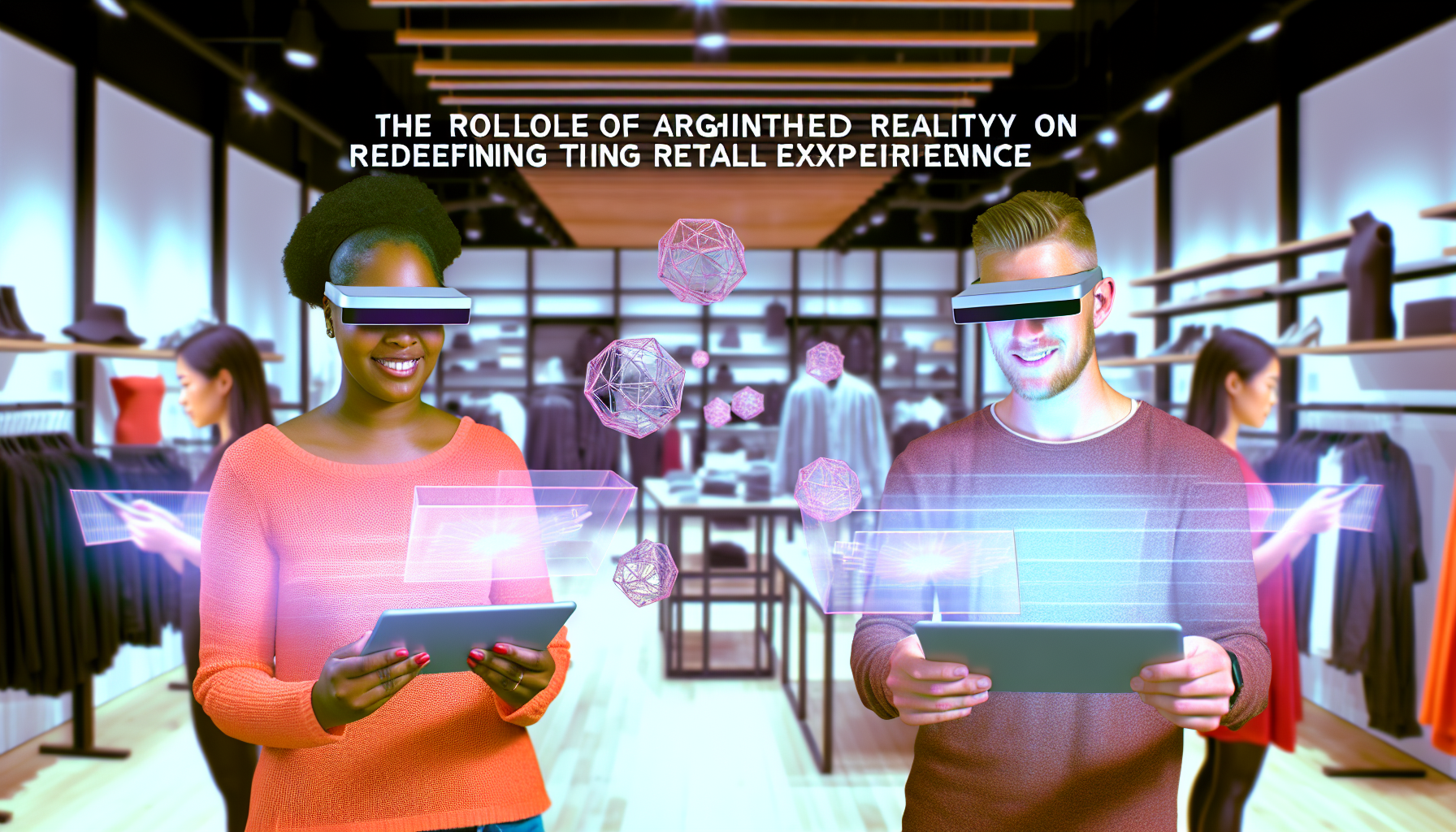In recent years, augmented reality (AR) has emerged as a powerful tool transforming industries worldwide, and retail is no exception. With the advancement of technology, AR is reshaping how consumers interact with products, enriching their shopping experiences, and helping brands create immersive environments. This article explores the significance of augmented reality in retail, its applications, benefits, and how it is redefining the consumer journey.
What is Augmented Reality?
Augmented reality is a technology that overlays digital information — whether graphics, sounds, or other sensory enhancements — onto the real world, often through a smartphone, tablet, or AR glasses. Unlike virtual reality (VR), which creates an entirely immersive environment, AR enhances the existing environment, allowing users to interact with both real and digital elements simultaneously.
The Evolution of Retail: A Shift Towards Experiential Shopping
Traditionally, retail has been primarily transactional, focusing on the exchange of goods for money. However, as competition increases and online shopping becomes more prevalent, retailers recognize the need to offer compelling experiences that keep customers engaged.
Experiential shopping focuses on creating an emotional connection and enriching the customer journey. AR plays a pivotal role in this evolution, offering a bridge between the physical and digital worlds that enhances the overall shopping experience.
Applications of Augmented Reality in Retail
-
Virtual Try-Ons: One of the most prominent applications of AR in retail is virtual try-on technology. Retailers like Warby Parker and Sephora allow customers to virtually try on glasses or makeup through an app or in-store interface. This feature reduces the need to physically try on products, catering to health and safety concerns, especially in the wake of the COVID-19 pandemic.
-
Product Visualization: Brands such as IKEA have adopted AR to help customers visualize how furniture will look in their homes. By using an app, customers can place 3D models of products into their own living spaces, allowing for better decision-making and reducing the likelihood of returns.
-
Interactive Packaging: Some brands are utilizing AR technology to create engaging product packaging. For instance, a bottle of wine might feature a QR code that, when scanned, reveals the story behind the vineyard, the wine-making process, or food pairings through interactive videos.
-
In-Store Navigation: Large retail spaces can be overwhelming, making it challenging for customers to locate specific products. AR-enabled applications can provide navigation assistance within stores, directing customers to the products they seek, thereby enhancing customer satisfaction.
- Gamification: Retailers are increasingly using gamification strategies through AR to create engaging shopping experiences. Interactive treasure hunts or challenges can be set up in-store to incentivize customers to explore various sections of the store and make purchases.
Benefits of Augmented Reality in Retail
-
Enhanced Customer Engagement: AR captivates consumers’ attention and encourages them to spend more time browsing. Engaging experiences tend to lead to higher conversion rates, as customers are more likely to purchase when they feel connected to the products.
-
Reduced Return Rates: Virtual try-ons and visualization tools can help customers make informed decisions and understand how a product will suit their needs. This can significantly decrease return rates, saving retailers both time and money.
-
Competitive Advantage: Retailers that adopt AR can differentiate themselves from their competition. Offering innovative technologies can be a compelling selling point and attract tech-savvy consumers looking for modern shopping experiences.
-
Personalization: AR solutions can be tailored to individual preferences, allowing retailers to create personalized experiences. By collecting data on consumer behavior, brands can recommend products that align with individual tastes and styles.
- Improved Brand Loyalty: A memorable in-store or online experience can lead to increased customer loyalty. When consumers feel valued and engaged through unique interactions, they are more likely to return to the brand.
Challenges Facing Retailers in Implementing AR
While the benefits of AR in retail are clear, there are challenges that brands must navigate:
-
Technology Costs: Developing and maintaining AR technology can be expensive. Smaller retailers may struggle with the funding required for effective implementation.
-
User Experience: If AR applications are not user-friendly, they can frustrate customers and detract from the overall experience. Retailers must ensure that these tools are intuitive and enhance, rather than complicate, the shopping journey.
-
Privacy Concerns: The collection of data necessary to create personalized experiences raises privacy issues. Retailers must be transparent about how they collect and use customer data to build trust.
- Technological Limitations: While AR is advancing rapidly, not all consumers have access to high-quality AR devices or systems. Retailers must consider this disparity and ensure that their AR solutions are accessible across different platforms.
The Future of AR in Retail
The future of AR in retail looks promising. As technology advances, we can expect more sophisticated applications that seamlessly integrate into everyday shopping. Innovations such as AR-driven in-store assistants, advanced virtual fitting rooms, and even AI-driven AR experiences will continue to redefine how consumers interact with brands.
In addition, as 5G technology rolls out, it will enable more robust AR applications with lower latency, improving the overall shopping experience. This integration will pave the way for real-time, interactive retail environments that respond dynamically to consumer preferences.
Conclusion
Augmented reality is undoubtedly reshaping the retail landscape, offering innovative solutions to enhance consumer experiences. By providing engaging, informative, and personalized interactions, AR is changing how customers perceive and interact with brands. As retailers adapt to this technological evolution, those who embrace AR will likely emerge as leaders in an increasingly competitive market.
FAQs
1. How do I use AR in retail?
- Retailers can implement AR through apps that allow customers to virtually try on products, visualize items in their homes, or interact with in-store displays. Collaborations with AR technology providers can help streamline this process.
2. Are there any specific industries within retail that benefit more from AR?
- While AR benefits various retail sectors, fashion, home furnishings, and cosmetics are typically at the forefront due to the visual nature of these products.
3. Does augmented reality require special equipment?
- Customers can use their smartphones or tablets for most AR applications. Some advanced AR experiences may require AR glasses, but these are becoming more accessible.
4. Will AR technology continue to develop?
- Yes, as technology advances, we can expect even more sophisticated AR applications that enhance interactivity, personalization, and immersion in the shopping experience.
5. How can AR impact customer loyalty?
- By providing unique and engaging shopping experiences, AR can lead to greater customer satisfaction, emotional connections, and repeat business, ultimately fostering brand loyalty.


